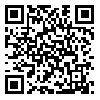BibTeX | RIS | EndNote | Medlars | ProCite | Reference Manager | RefWorks
Send citation to:
URL: http://rjms.iums.ac.ir/article-1-444-en.html
Although cataract is very common and its detection seems apparently easy especially in the mature cataract, its quantitative description to determine the critical value of diagnosis is too difficult. Non-invasive evaluation of the mechanical properties of eye is hampered by the absence of in-vivo methods for direct assessment of the axial length of eye, lens and cornea. In the present study, firstly, rabbits’ eyes were suggested to create cataract. Then, through a non-invasive method the elastic parameters of the cataract eyes were estimated. 12 male rabbits (3 months old, New Zealand white/Dutch) were chosen in order to create and control the trend of cataract and Lux-metry. After the injection of formalin (20%) to the lens of each rabbit, the results showed that the intensity of the reflected light from the rabbits’ eye had descending trend, and after one hour a mature cataract was confirmed. To assess Δ d, a planning loading system was designed. Ultrasound images of A-mode with the mechanical probe and the frequencies of 8 and 10MHz were taken before and after applying the stress and saved into the computer by median board. With processing its imaging before and after applying the stress the axial length changes of eye ( Δ d) was estimated in in vivo and in vitro conditions. The mean axial length of the cataract eye in vivo and in vitro were 19.71 ±0.32 and 18.81±0.44mm, respectively (P>0.05), which indicated that there was no significant difference between these two conditions. Regarding the applied stress, the mean elastic modulus of the cataract eye in in vivo and in vitro conditions were 84004±17656 and 106864±33346 Pascal respectively (P>0.05), which showed that there was no significant difference between in vivo and in vitro conditions. Results of the present study showed that with applying limited stress, processing the ultrasound images, assessing the amount of strain and assuming an elastic structure for eye, it is possible to estimate its elastic parameters through a complete non-invasive method. Since, in the cataract eye, any change in the elasticity of the lens will change the acoustic properties of the tissue including the velocity, this new method may be useful in the exact determination of the acoustic parameters based on the elastic module and may increase the preciseness of the ultrasound systems. It may further be effective in making the lens after surgery.
| Rights and permissions | |
 |
This work is licensed under a Creative Commons Attribution-NonCommercial 4.0 International License. |





